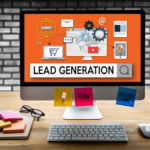With the evolving landscape of digital marketing, generating leads and sales hinges upon a successful landing page. But what exactly is the ideal copy for a landing page? Where once it was merely the persuasion of the human mind to guide such an endeavor, now with the rise of artificial intelligence (AI), cheap, fast and hyper-personalized copy options exist. But does AI technology surpass human efforts in terms of effectiveness on the landing page, or does the human touch still come out on top?
Human Copywriters Have an Emotional/Psychological Advantage
AI copywriting cannot compete with the emotional/psychological quality of human-generated copy. Copywriters possess an understanding of situational irony, puns that play upon different cultures, humor that is contextually bound, and other psychological/emotional drivers that machines are bound to miss. However, the role of AI in landing page design complements human creativity by optimizing layout, structure, and content placement for higher engagement. Human empathy creates a vibe of understanding better what is relatable and as a persuasive device it provides trust and integrity with the potential customer which often increases conversion rates on landing pages as a result.
AI Copywriting is Quicker and More Efficient
AI copywriting allows for quicker and more efficient attempts at great landing pages. Where human copywriting requires much time spent on research in the initial stage, additional reading to ensure quality in subsequent stages, drafting, editing, multiple rounds of proofreading, overhauls based on SEO optimization and more, AI simply churns out text in seconds. Quickness and efficiency allow for rapid A/B testing across landing pages to determine what version works best and resonates most with potential customers. Therefore, when it comes to speed and results, AI generates copy that gives it a measurable advantage.
Personalization and Data-Driven Insights. AI’s Disadvantages.
Yet, AI generated copy comes with one major disadvantage, personalization that might be too extensive and too intrusive. Instead of relying on human experience and educated guesswork, machines rely on a vast collection of data to not only understand what a user wants but to access who is creating content, when and more. Instead of a writer being able to craft certain pieces based on buyer persona from human research over time, the machine can do it instantly. It knows perhaps too much about its audience. Moreover, the more hyper-personalized content becomes, the more it’ll engage but at the same time, it’ll increasingly make people feel uncomfortable, rendering landing pages effective but intrusive.
Trust & Authenticity with Human Copy
Trust and authenticity are still critical. Therefore, for effective marketing efforts to persuade audiences, copy generated by humans feels more authentic, giving audiences a more personal feel based on emotional and overt appeals. Audiences react more positively to branding voices that sound more like humans as opposed to humans trying to write like computers. Where AI can reproduce stylistic writing quite effectively, it lacks the sensical appeal or charm in a natural human capacity that would make such work trustworthy.
AI’s Downside: Redundant or Generic Copy
Another downside to AI-generated work is the potential for redundancy or overly generic text. This happens because AI relies upon previously made patterns of data numbers and letters which means sometimes generating predictable phrasing and formulaic structure. For example, a landing page with generic/redundant copy can harm a site’s potential as generic/redundant copy turns audiences off, leading them to believe the page has less credibility than it does (or ineffective attempts at conversion) when, in reality, it may have good intentions. AI is helpful but not in the creative process all the time, because common sense ensures this downside doesn’t happen.
Human Limitations: Cost and Scalability Advantages
Despite the advantages of creativity, human copywriters fail regarding costs and scalability. Hiring skilled copywriters is not a budget-friendly option and generating customized copy at an overwhelming, if not infeasible, output level is challenging. Conversely, AI-generated copy is highly scalable, allowing businesses to generate multiple landing pages concurrently at a lower cost and in no time at all. The ability to scale is necessary for the high-demand marketing industry, thus rendering AI the advantage.
Hybrid Approach: Get the Best of Both Worlds
Marketers have found that a hybrid of the two styles seems to lead to even better landing pages. For example, marketers let AI take the reins at the beginning, creating a rough draft in no time with data-driven optimization such as proper keywords, audience targeting and segmenting, and personalization, for example. Then they take the human approach, using their emotional resonance, unique creativity, and human voice authenticity to craft the copy. The hybrid approach allows both humans and machines to work to their strengths and create written landing pages that entice and persuade, engage and inspire with proper optimization along the way for a potential best-in-class chance at conversion.
Measuring Performance: Data-Driven Results
The best way to compare human and AI writing is through performance. But performance is measured by the facts. Marketers take feedback from click-through rates, conversions, bounce rates and audience engagement over measured time frames (hours, days, months) to see how objectively one outperforms the other. The data shows that where AI is better for short-term results, faster generation, better personalization from gathered data, human writers reign supreme in transparency over long-term trustworthiness. In addition, while certain statistical tests help determine which performed better for specific campaigns, continuity testing helps determine which is best over time.
Ethics affect efficacy of copywriting through transparency and trust of the end user
Ultimately, ethics influence the efficacy of copywriting as well. Users expect increasingly transparent efforts surrounding AI use for copy creation. Copy written by a human creates a voice for the moment, creating trust from the end user. On the contrary, any company that creates copy via AI needs to ensure it goes above and beyond for the public to know how to use disclosures, information about any data collection from the created copy and any privacy policies. Ethical inclusions create trust and allow users to feel safe enough to engage and convert on their landing pages.
Training Marketing Teams for AI Collaboration
Thus, to maximize the potential for AI-generated copy for landing pages, marketing teams should be extensively and continuously trained on both AI-generated possibilities as well as foundational copywriting. This is because AI can be a powerful resource to create copy in a fraction of the time, offering highly personalized suggestions and adjustments in real-time but without an understanding of the powers of AI and natural weaknesses that’ll result in repetitive phrasing, formulaic output or inauthentic sentiment, these might fall victim to poor quality copy. Yet if marketers are trained on the possibilities, they’ll know where and when to use the best features while intentionally avoiding the machine-created flaws.
Furthermore, training should also include fundamentals of traditional copywriting taught by humans for human creation that leverage creativity, emotional connection, audience intrusiveness, storytelling and persuasive elements. Marketers need to know the nitty-gritty details that human writers naturally use in their writing that makes an impact for audience engagement, budgeting and ultimate conversion abilities. This way, a greater awareness of when something should feel like an AI-generated copy or when it must be original will ensure that all components of the landing page are authentic, emotionally grateful and ultimately successful.
In addition, the marketing team will need training focused on the proper integration of AI into the larger marketing picture. For example, they’ll need to understand how to convert AI statistics into next steps, how to best create SEO content from machine-generated pieces, how to A/B test content in real time, and how to examine AI-generated products with a layer of human review. With this training on integration opportunities, marketers will be better able to ensure that AI-generated copy works cohesively with marketing campaigns, branding efforts, and expected audience feedback.
Thus, a trained team can utilize all that AI has to offer while ensuring nothing slips through the cracks that human copywriting brings. They’ll be able to adeptly combine machine-generated efficiency and statistical importance with human compassion, creativity, and authenticity, exponentially adding value to landing pages. Ultimately, with trained capabilities, the marketing team will have the potential to create AI-generated landing pages that champion quality, audience retention, conversion rates, and market share that surpasses anything achievable without artificial help.
Future Trends: AI and Human Collaboration Evolving
The evolution of the world indicates an even further merger between current abilities in human copywriting and AI with an even more extensive network for digital creation. As increasingly more powerful and developed AI systems emerge at a rapid pace, they’ll be better equipped to replicate certain subtleties of human emotional intelligence, authenticity, and creative thought. In time, for example, AI-fueled copy will be able to rely upon those emotional nuances that fall in line with emotional intelligence, as rendered by humans, while being more authentic and creatively original based on elements previously achieved only by human writers.
At the same time, human copywriters will achieve ever more complex creations by relying upon AI-generated analytics, insights, and elements of personalization that can only heighten their creativity and effectiveness of the written word. These massively complex data-driven components create incredible real-time conclusions about consumer action, preference, and emotional triggers. Thus, copywriters achieve ever better access to emotionally driven connections through targeted elements, precision, and dynamic equilibrium that champions what people want and need in real time.
Therefore, it won’t be humans and AI competing in the marketplace for copywriting. Instead, there will be increasingly harmonious approaches to human and AI capabilities. Copywriters will rely increasingly upon AI’s ability to quickly sift through millions, sometimes billions of data entries and assess what’s essentially going to work best for audience response almost immediately; minute-to-minute adjustments in real-time can allow for niche or specific audience copies at any moment. Yet simultaneously, AI will require continued human oversight, ingenuity, and purpose to ensure conversational techniques always stay true to authenticity, emotional resonance, and creative originality.
Those who capitalize on such an evolutionary process sooner than later and maintain a growing symbiotic relationship will always have a leg up regarding successful copy on landing pages. These companies will generate copy that effectively encompasses both worlds, the speed, efficacy, and data analytic precision of AI mixed with honesty, equity of emotion, and strategic planning only obtainable through human presence and awareness of the human condition. Thus, such companies will forever possess a competitive advantage over others where they can satisfy human needs and desires while simultaneously ensuring sustained engagement and conversion rates amid an ever-complicated digital universe.
Final Thoughts: Striking the Right Balance for Landing Page Success
Ultimately, whether human copy or AI copy is more effective for consumer engagement on a landing page is relative to too many factors, situation, specific marketing goals, age/gender/location of audience, and final user goal. AI works faster and more efficiently with growth scalability and personalization opportunities thanks to analytics and projection; thus, companies can create and A/B test multiple versions in no time, fine tuning effective landing pages with message focus that resonates upon initial engagement for a myriad of buyer personas with potentially higher conversion rates.
However, a human is better at appealing through emotional connection, pragmatic subtleties and creative nuance; thus, even if AI can parse what works first for others and provide a feeling of credibility, a human knows how to determine emphasis based upon emotional appeals fostering trust, credibility and connection. Tone, humor, feeling and storytelling are things humans understand in depth whereas AI merely plays with such concepts but will never fully appreciate the implied meaning necessary behind each. Emotion, authenticity, creativity these are all things necessary to fuel a landing page which ought to encourage trust and ethical challenges for long-term conversions.
The companies that will ultimately generate the best landing page conversion will rely on a mixture of human written and AI written copy for the ultimate balance because both sides bring certain advantages and disadvantages to the process. For example, while AI can generate ideas in seconds, analyze and implement A/B testing in seconds, conduct keyword research and optimization and personalize marketing through real time analysis of consumer actions, human copywriters can take the rough draft and polish it to precision through clarity, creativity, empathy, niche insights and brand voice that AI may overlook.
Companies who understand the balance between what humans can write versus what AI can analyze and render based on predictable results are those who will always have better and more effective landing pages; more effective than any human written landing page or AI generated copy. The fusion of technology with human crafted sensibility allows landing pages to not only convert conversions but also create brand credibility and customer loyalties for later which allows these companies to maintain their competitive advantages over those who fail to utilize such resources in an increasingly digital and savvy marketplace.












